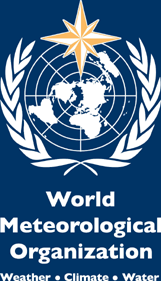MEDIUM RANGE OUTLOOK
(weather trends through the next 6 to 10 days)
I meant what I said when I called this season the "Winter Of Extremes", similar to the haphazard 1995-96 low sun period for precipitation potential, barrages of colder air and sudden warming. If you look at longer term forecasts for the 500MB longwave pattern, everything from a PNA-styled ridge and full-latitude trough complex show up. And in the past couple of model runs of the GFS and GGEM versions, a TUTT signature appears to threaten the islands along the eastern rim of the Caribbean Sea! What is most important to note, however, is the offspring of the mean trough that is predicted to set up from Hudson Bay into GA and FL: a possible major Nor'easter.
It appears that any incursions from shortwaves over the Pacific Ocean will be short-lived, and that most of the impulses will recurve toward BC and AK. That type of track will pump up atmospheric heights across the western third of the continent between now and January 13, favoring a downstream trough that also shows up in depictions through the next 10 days. With that scenario in mind, Arctic shortwaves will be able to dig into the Southeast, then turn north off of the western shoreline of the Atlantic Ocean. The 0z Jan 3 GGEM shows two such systems, the concurrent GFS and ECMWF forecasts at least one. The favored time for development would be Friday and Saturday.
Three characteristics stand out with the potential storm: it is progressive in nature, is trough type (never closes off at 500MB) and will almost certainly stay offshore and not introduce warmer air for a changeover from snow to rain. Now we must keep a tab of known model biases this season. Since October, most of the storms which has affected the eastern third of the nation have initially been plotted well too far south and east (underestimation of persistent heat ridge over Sargasso Sea and/or Greater Antilles). I should also mention that while the ECMWF and GGEM schemes have performed well in evaluating storm occurrence, each computer model has faired poorly at determining structure (longwave, hybrid, trough, or shortwave type). So while the chance of an East Coast storm looks good, I would warn you that the eventual outcome of track may be further northwest and the feature may be either deeper or weaker than the "average" looking impulse seen moving to the right of the Eastern Seaboard during Friday and Saturday.
I also notice that the aforementioned subtropical high in the vicinity of Cuba and Hispaniola rebuilds nicely after 168 hours, at a time when a shortwave digs through the Intermountain Region into the High Plains. So considering that the western U.S. low may interact with a vast field of cA values in Canada between 192 and 240 hours, all the while grabbing a huge fetch of very warm, moist air, the period around January 12-13-14 in the eastern half of the nation could feature (yes!) a rather extreme variety of temperatures and precipitation.




































<< Home